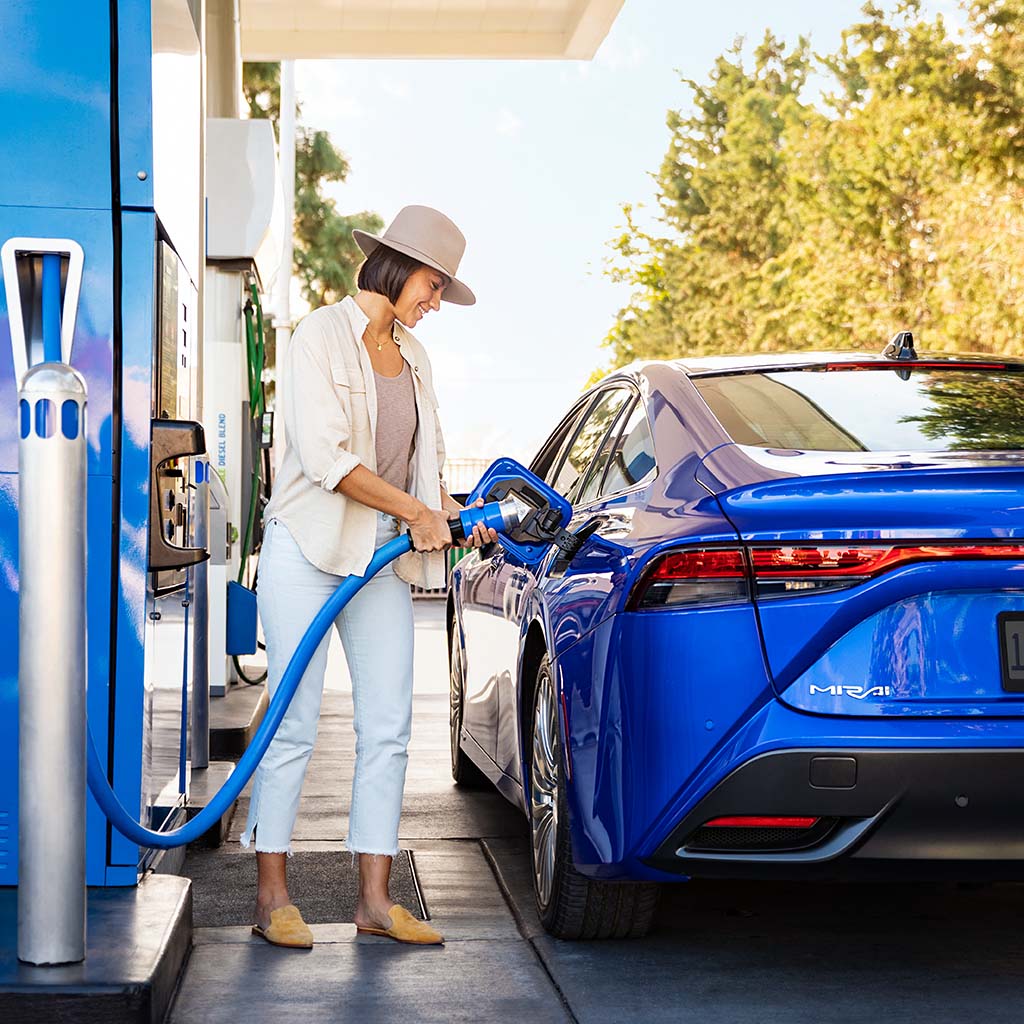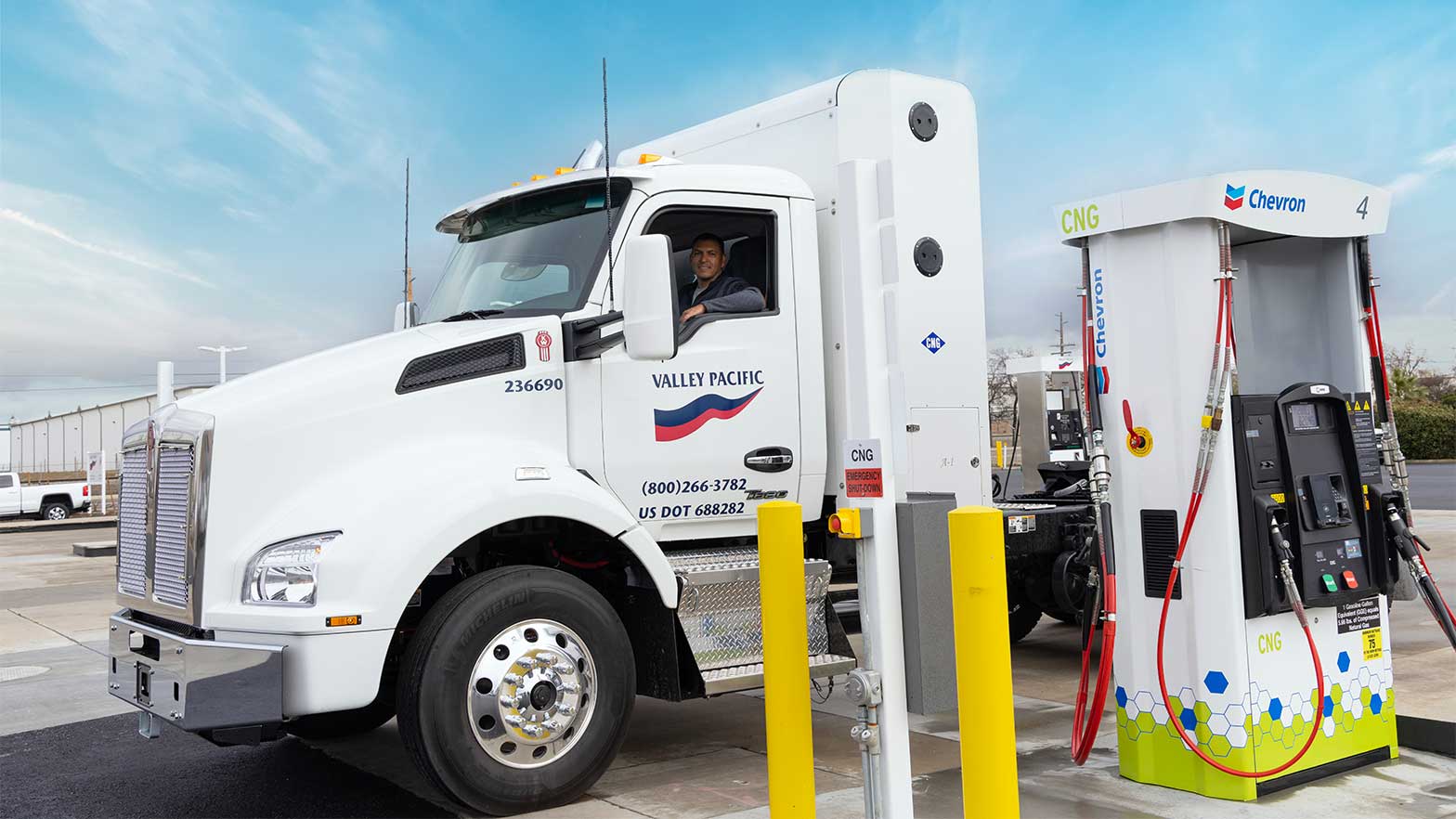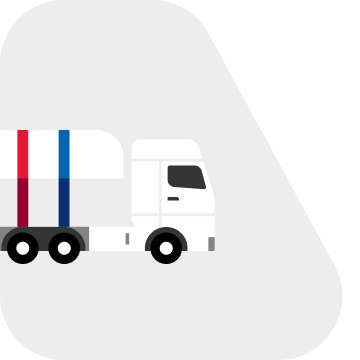automotive
fueling cars with efficient alternatives
People love their cars, pickups and SUVs, but they account for 57% of road greenhouse gas (GHG) emissions in the U.S. New technology, ambitious policies and renewable fuels could help to drastically reduce GHG emissions.
a typical passenger vehicle emits about
4.
0
1
2
3
4
5
6
metric tons of CO2 per year
solution
diversifying fuels for the light-duty future
It takes a variety of solutions to keep cars running smoothly while helping to lower GHG emissions. Renewable fuels are key.

the most abundant lower carbon energy source
The market is growing for cars that run on hydrogen-powered fuel cells. Chevron produces nearly 1 million tons of hydrogen every year and, together with Iwatani, will build 30 hydrogen fueling stations in California by 2026.

a lower carbon conventional fuel available now
Compressed natural gas (CNG) is generated by storing renewable natural gas (RNG) in high-pressure containers. In June 2021, Chevron branded our first CNG station, with plans for 30 more by 2025.

fueling today’s vehicles with lower carbon solutions
Renewable gasoline blends are drop-in fuels compatible with cars on the road today. Access to gasoline with less carbon intensity gives each of us an opportunity to be part of the solution.



success stories

another chevron CNG station in california crops up in farm country
Chevron opened another retail compressed natural gas (CNG) station in California. CNG is a commercially proven, lower carbon alternative to gasoline and diesel.
learn more

driving progress with renewable gasoline blend
Chevron’s innovative fuel prototype could reduce a vehicle’s lifecycle carbon dioxide emissions by more than 40%. Read how Toyota has used it with existing fuel storage in a shipment of new vehicles.
learn more
partnership – toyota
exploring hydrogen for vehicles
read press release
partnership – iwatani
chevron, iwatani to build 30 hydrogen fueling stations in california
read press release
transportation solutions







